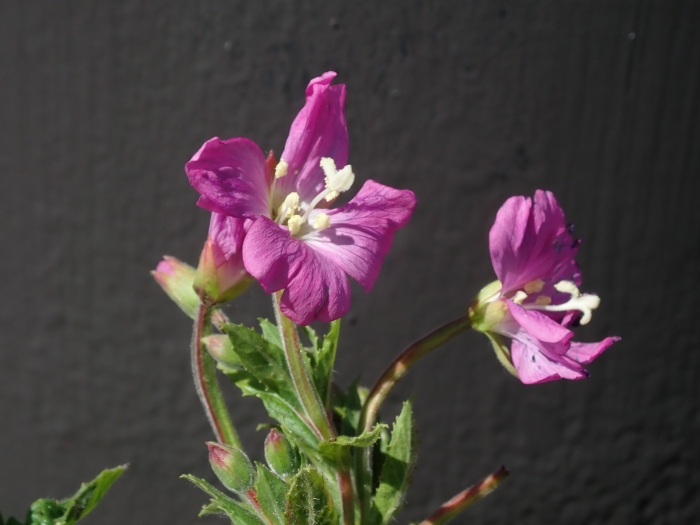Great Willowherb
(Epilobium hirsutum)
Great Willowherb (Epilobium hirsutum)
/
/

Daniel Cahen
CC BY 4.0
Image By:
Daniel Cahen
Recorded By:
Copyright:
CC BY 4.0
Copyright Notice:
Photo by: Daniel Cahen | License Type: CC BY 4.0 | License URL: http://creativecommons.org/licenses/by/4.0/ | Rights Holder: Daniel Cahen | Publisher: iNaturalist | Date Created: 2021-07-16T15:41:45-07:00 |

























Estimated Native Range
Summary
Epilobium hirsutum, commonly known as Great Willowherb or Hairy Willowherb, is a tall perennial herb that thrives in a variety of wet habitats including marshlands, ditches, riverbanks, and also in damp woodlands and meadows across Africa, most of Europe, and parts of Asia. It can reach up to 7 feet in height and is characterized by its robust, hairy stems and lance-shaped leaves. From June to September, it produces large, showy purple-pink flowers with four notched petals and a prominent central stigma, which are attractive to bees and other pollinators.
Great Willowherb is valued for its ornamental flowers and its ability to thrive in wet, challenging conditions where other plants may struggle. It is often used in naturalistic planting schemes, wildlife gardens, and for erosion control along waterways. This plant prefers consistently moist soil, full sun to part shade, and can tolerate a range of soil types provided they are wet. While it is generally low-maintenance, it can spread vigorously by seed and rhizomes, potentially becoming invasive outside its native range. Gardeners should be cautious and check local regulations before planting.CC BY-SA 4.0
Great Willowherb is valued for its ornamental flowers and its ability to thrive in wet, challenging conditions where other plants may struggle. It is often used in naturalistic planting schemes, wildlife gardens, and for erosion control along waterways. This plant prefers consistently moist soil, full sun to part shade, and can tolerate a range of soil types provided they are wet. While it is generally low-maintenance, it can spread vigorously by seed and rhizomes, potentially becoming invasive outside its native range. Gardeners should be cautious and check local regulations before planting.CC BY-SA 4.0
Plant Description
- Plant Type: Herb
- Height: 3-8 feet
- Width: 1-2 feet
- Growth Rate: Moderate, Rapid
- Flower Color: Pink, Purple
- Flowering Season: Summer, Fall
- Leaf Retention: Deciduous
Growth Requirements
- Sun: Full Sun
- Water: Medium, High
- Drainage: Medium, Fast
Common Uses
Bee Garden, Erosion Control, Low Maintenance, Water Garden
Natural Habitat
a variety of wet habitats including marshlands, ditches, riverbanks, and also in damp woodlands and meadows across Africa, most of Europe, and parts of Asia
Other Names
Common Names: Great Willowherb, Great Hairy Willowherb, Hairy Willowherb
Scientific Names: , Epilobium hirsutum, Chamaenerion grandiflorum, Chamaenerion hirsutum, Epilobium amplexicaule, Epilobium aquaticum, Epilobium dubium, Epilobium foliosum, Epilobium grandiflorum, Epilobium grandiflorum
GBIF Accepted Name: